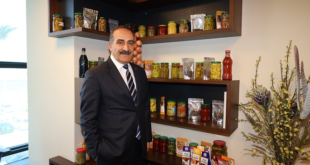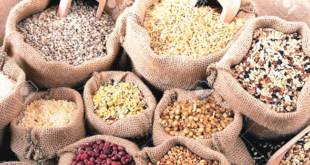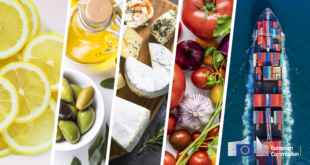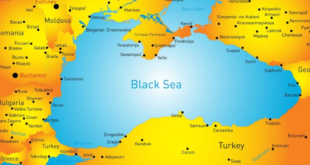Sometimes it can be interesting to write the words that will be written as the last words at the beginning. Final words are written to convey a message, but sometimes to remind you why the topic is important. Therefore, this article will begin by taking many people into a dream world. Now I’ll start by asking everyone to close their eyes and go to this dream world:
-You have to live with immigrant refugees in the tent area you are staying in.
-In a tiny tent, 7 or 8 people stay together and you sleep.
– There is no electricity or regular in your residential area.
-Your garbage is not collected. Even if it is collected, it is taken either once a month or every 15 days.
-Environmental spraying is not done. You have to live with flies and insects.

-Your drinking and utility water comes with tankers. The duty of the women staying in the camp is to take and carry water from the nearest fountains.
– Toilets are very dirty and there are almost no cleaning facilities.
-If you have a disabled child, you have to keep him / her only in the tent and when there is a problem, there is no health service to take your child immediately.
Current Status of Seasonal Child Labor
Starting with an unfavorable scenario is not an article I prefer, when I go to my machine in no time. I prefer to write more cheerful, more hopeful articles. But sometimes I feel compelled. Because I think there are many things that people ignore even though they see it.
One of these issues is the “seasonal workers” who travel from one part of the country to another part of the country throughout the year. When we’re driving on a highway, we see them. They stay in tents and work throughout the day. First we get a sense of pity, think about how they work in the sun all day. We think about how they stayed in those tents. But this is a very short reflection. When you continue on your way, we don’t think to look back. We forget and go. Maybe until I see it again ..
According to the global estimates and trends 2012-2016 report published by the ILO in 2017, 152 million children in the 5-17 age group worldwide, that is, 10 percent of the child population in the world, work as child labor. 72 million of these children do jobs that endanger
their health, safety and moral development.
Distribution of Child Labor by Sectors
The highest rate of child labor in the world is seen in the agricultural sector. Child labor in the agricultural sector is primarily concentrated in small family farms, but is seen in livestock, fishing and aquaculture activities.
Child labor in agriculture emerges as both paid and unpaid family labor. The widespread work of children in agriculture stems from the long working hours in the agricultural sector, widespread unregistered employment and insecurity.
Turkey at the end of 2019, TSI data on child labor (Turkey Statistical Institute) was collected by. Accordingly, the overall number of children in the 5-17 age group is estimated to be 16 million 457 thousand persons in Turkey. Children in this age group constitute 20.3% of the non-institutional population. By age groups, the number of children in the 5-11 age group is 9 million 12 thousand, the number of children in the 12-14 age group is 3 million 796 thousand, and the number of children in the 15-17 age group is 3 million 649 thousand people. 44.7 percent of all working children work in agricultural production.
The fact that children work in paid seasonal agricultural work shows that these children who have not completed their physical development are faced with severe conditions.
Isn’t the education status of these children delayed?
The researches carried out by the Support to Life Association show that the education lives of a great majority of children who experience migratory seasonal migration, whether they work in the field or not, are interrupted. 50 percent of children (18 and under) working in the field drop out of education, and this rate is 21 percent even for children not working in the field.
Why don’t they go to school or what’s challenging them?
These children cannot go to school because they have to contribute to the family budget. Because the poor and economically these families are in a very difficult situation.
At the beginning of the livelihood strategies of poor households, those who can work in the family should be directed to various activities that generate as much income as possible. Rural families are obliged to have more children according to this strategy. As the children grow up, the family is compelled to force their children to work as agricultural workers, just like themselves. There is no age to work as a worker, either. They just need to work, they believe that “a daily wage is a wage“.
Under what conditions do these workers work?
Considering the results of the research conducted by the Development Workshop with the families of seasonal agricultural workers who came to work for the hazelnut harvest in the Western Black Sea Region, it is possible to see the difficulties these children face. The working conditions of these children are generally the same as the working conditions of adults, so children start working at 07:00 in the morning and finish work at 19:00 in the evening. During this 12-hour period, they have the right to eat and rest for 1.5 hours in total. Children do not just collect nuts. They also carry plastic buckets and sacks for hazelnut stools. Considering the physical postures and working styles of children in the hazelnut harvest, can you imagine that they repeatedly perform the same movement in the same way and how negatively this situation could affect the physical development of children?
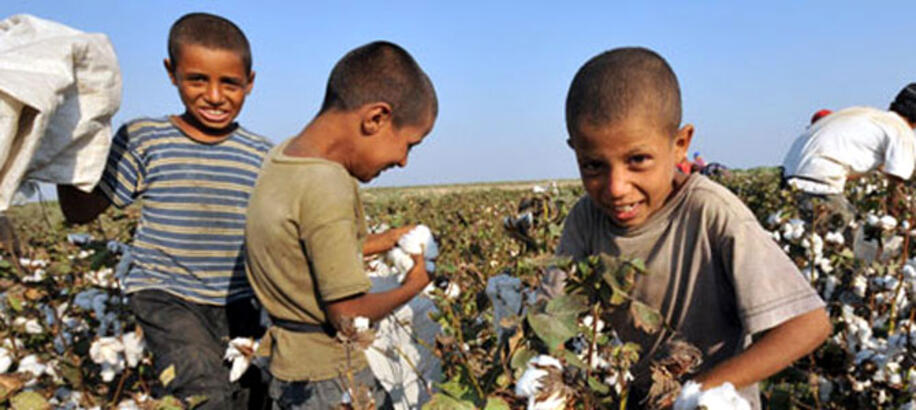
These children are faced with a series of risks arising from both tent sites and working conditions. For example;
-Especially in tent areas, there is no drinking water, they are always at risk due to electricity leaks, they use unhygienic toilets and bathrooms, due to the fact that tent areas are generally installed on the road or canal sides, many people get diarrhea and similar diseases due to the contamination of drinking water from the channels. the risk is quite high. Despite the climatic conditions such as hot and cold, insect and snake bites and the Coronavirus epidemic, they are faced with uncontrolled transportation conditions. Issues such as newborn babies, pregnancy and birth related health services, vaccination of children, detection of epidemic and communicable diseases are “uncontrollable facts” for each of us.
What do employers say? The Role of Agricultural Intermediaries?
The vast majority of paid work in agriculture is organized by agricultural intermediaries. Agricultural intermediaries are the intermediaries that bring workers and employers together. These intermediaries also take on a number of responsibilities, such as accommodation of the workers close to the production site, meeting their food and other needs, and reaching the places to work. The role of these people is very important. But who are these people? How do they view child labor?
It is not possible for them to look negatively. Because they were already “child workers“. Employers who continue the father’s profession actually. Therefore, they have to keep them in the field whether they want to or not. This is the reason why these children are excluded from education. The only condition to prevent these children from falling into bad roads is to work in the field. No matter how old they are!
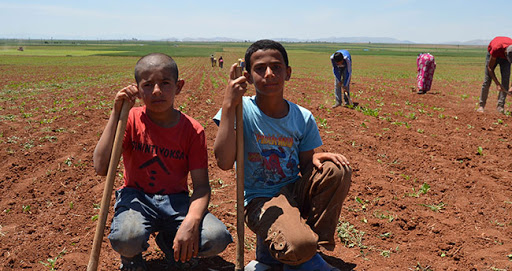
In this way, as the children in the family grow, an increasing contribution is made to the economic activities of the family, thanks to this contribution, the children both feel that they are a member of the group and experience a socialization. This situation inevitably makes child labor a part of seasonal agricultural production.
For families engaged in seasonal agricultural work, agricultural intermediaries and employers who direct them to different jobs, who the child is is not a reality expressed by age.
The child can be an individual of different ages. Therefore “do you employ child labor?” They usually answer the question “no, we are not child labor.” However, for this community, when the individual is over the age of 11-12, he is regarded as an individual who ceases to be a child and evolves into one of the main employees of paid agricultural production. 14-15 year olds are seen as the main people to do these jobs.
END of the word spoken at the beginning
It is a dream that their only job will be to “get an education at school”. Is it possible?
The picture may seem pessimistic and perhaps hopeless. My only consolation is that there are people and institutions that have been actively working on this issue in the world for years. One of these institutions is the “Development Workshop Cooperative”, which has very serious publications. They are trying to tie agricultural intermediation to a professional certification. These standards will help agricultural intermediaries become more aware. While talking to employers, he will be able to make his employees persist and bargain for better working conditions.
Some large firms provide better living and working conditions for seasonal workers. They see them as human beings, not like their employees, their slaves.
Every person has the right to life. Human rights are untouchable, indispensable high quality moral values that make human beings human and that human beings are born without being bound by any condition or status. For our children that we continue to exist, children’s rights are; legally or morally all children in the world (even if they are seasonal agricultural workers) are congenitally owned; Universal rights such as education, health, life, housing, protection against physical and psychological or sexual exploitation.
It is imperative that societies, governments and all institutions and businesses take this responsibility and provide the necessary facilitation.
Professor Dr. Meltem Onay,
Vice Rector
15 November Cyprus University
 THE GLOBAL WINDOW OF TURKISH FOOD AND AGRICULTURE The Global Window of Turkish Food and Agriculture Sector
THE GLOBAL WINDOW OF TURKISH FOOD AND AGRICULTURE The Global Window of Turkish Food and Agriculture Sector



